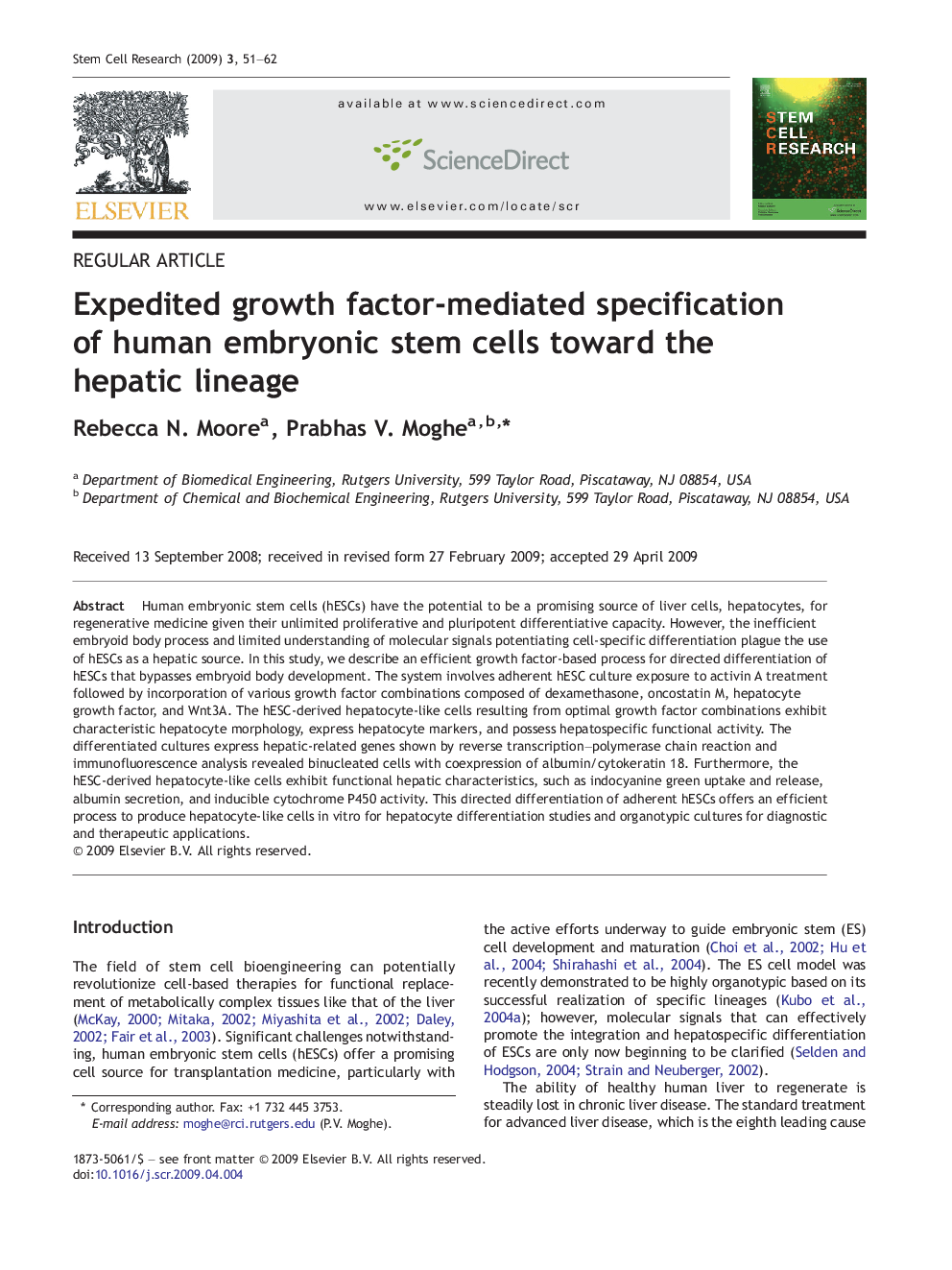| Article ID | Journal | Published Year | Pages | File Type |
|---|---|---|---|---|
| 10891443 | Stem Cell Research | 2009 | 12 Pages |
Abstract
Human embryonic stem cells (hESCs) have the potential to be a promising source of liver cells, hepatocytes, for regenerative medicine given their unlimited proliferative and pluripotent differentiative capacity. However, the inefficient embryoid body process and limited understanding of molecular signals potentiating cell-specific differentiation plague the use of hESCs as a hepatic source. In this study, we describe an efficient growth factor-based process for directed differentiation of hESCs that bypasses embryoid body development. The system involves adherent hESC culture exposure to activin A treatment followed by incorporation of various growth factor combinations composed of dexamethasone, oncostatin M, hepatocyte growth factor, and Wnt3A. The hESC-derived hepatocyte-like cells resulting from optimal growth factor combinations exhibit characteristic hepatocyte morphology, express hepatocyte markers, and possess hepatospecific functional activity. The differentiated cultures express hepatic-related genes shown by reverse transcription-polymerase chain reaction and immunofluorescence analysis revealed binucleated cells with coexpression of albumin/cytokeratin 18. Furthermore, the hESC-derived hepatocyte-like cells exhibit functional hepatic characteristics, such as indocyanine green uptake and release, albumin secretion, and inducible cytochrome P450 activity. This directed differentiation of adherent hESCs offers an efficient process to produce hepatocyte-like cells in vitro for hepatocyte differentiation studies and organotypic cultures for diagnostic and therapeutic applications.
Related Topics
Life Sciences
Biochemistry, Genetics and Molecular Biology
Biotechnology
Authors
Rebecca N. Moore, Prabhas V. Moghe,
